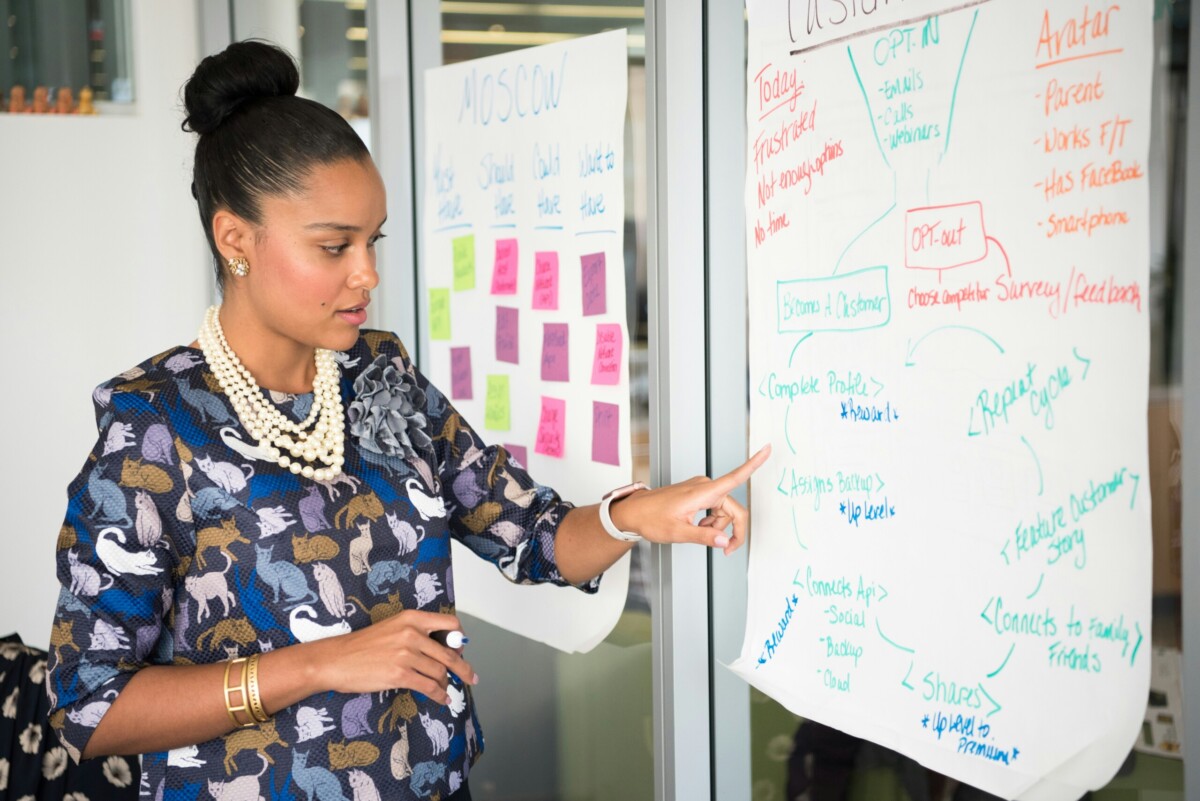
What gets donors going? The heart, not the head.
“People do not give to the most urgent needs, but rather they support causes that mean something to them.”
This is the finding from a report done by the Centre for Charitable Giving and Philanthropy at the University of Kent: “How Donor Choose Charities.” They begin their study from the widely-accepted premise that charities exist primarily to help needy people and the desire to meet needs is a key criterion in the selection of charitable beneficiaries. Interviews with committed donors found this was not the reason they gave. In brief, the study concludes:
Giving and philanthropy have always been supply-led rather than demand-driven: the freedom to distribute as much as one wants, to whom one chooses, is what distinguishes giving from paying tax. Yet the methods used to encourage donations tend to assume that philanthropy depends on objective assessments of need rather than on donors’ enthusiasms. The tendency to overestimate the extent to which people act as rational agents results in fundraising literature that often focuses on the dimensions and urgency of the problem for which funding is sought. The assumption underlying this approach is that donations are distributed in relation to evidence of neediness, when in fact much giving could be described as ‘taste-based’ rather than ‘needs-based’.
If there was ever a time to commit to finding out more about the folks on your mailing list so you know what floats their boats, this report indicates that time is decidedly NOW. Otherwise, you’re just “spraying and praying” as you buy into the conceit that “if only” folks knew about the need we address, they would give. Because they should. That’s not why folks give.
People Don’t Always Behave Rationally
The truth is people are ruled by emotion more than objective data. We’re affected by stories we’re told and emotions we feel.
The study cites four criteria that influenced donor decision making. Perhaps surprisingly, they are not based on meeting your organization’s or your beneficiaries’ needs. Of course, these things factor in. But only after you’ve captured someone’s attention with something that relates to them and resonates with them personally and met the key influencing criteria.
THE FOUR KEY INFLUENCERS ARE:
- Donors’ tastes, preferences and passions, acquired as a result of an individual’s social experiences. These motivate many giving decisions, even among donors who perceive themselves to be motivated by meeting needs.
- Donors’ personal and professional backgrounds, which shape their ‘philanthropic autobiographies’ and influence their choice of beneficiaries.
- Donors’ perceptions of charity competence, notably the efficiency with which they are believed to use their money, often judged on the basis of the quality and quantity of direct mail.
- Donors’ desire to have a personal impact, such that their contribution makes a difference and is not ‘drowned out’ by other donors and government funding.”
If you’re relying on prospective donors to deliberate on the merits of your appeal based on the need you convey, you’re on the wrong track. The report concludes, in fact, that:
“Committed donors are not necessarily deliberative donors.”
People Don’t Give Because You Simply Articulate Need
Interviewees were disarmingly honest about their lack of knowledge regarding the causes and charities they support. Responses included:
- I [don’t] give it that much intellectual thought.
- I must admit I don’t do a huge amount of research.
- Well, that has been a bit haphazard to be quite honest with you.
- I don’t think I go into it that deeply.
- I’m not methodical about it . . . I don’t have any very good way of choosing . . . I just go by gut instinct I suppose.
- It’s just what grabs me and what doesn’t.
If you want to do a better job motivating giving, you must:
- Understand the key influencing criteria.
- Meet donors where they actually are, rather than where you perceive them to be.
- Know donor tastes, and offer something just for them.
- Check in with donors frequently.
All of the criteria are important, with #1 and #4 being probably the most critical in answering the “why would a donor give to my charity?” question.
4 Key Influencing Criteria
1. Donors’ tastes, preferences and passions
This goes to the heart of donor identity – how donors see themselves. It’s not about what’s in your mind about what’s needed, it’s about what’s in your donors’ minds.
Tastes are acquired as a result of experiences, and are rooted in an individual’s socialization which includes their upbringing, education and professional experience. Human beings are naturally attracted to what feels familiar.
TIP: The more you know about your donor’s background in this regard, the better you can tailor your appeal to make it relevant. Nick Ellinger of Donor Voice and The Agitator has written a useful piece on different donor identities here; it’s a useful starting point for imagining ways you might segment your donors according to different identities (e.g., Received services; Volunteered; Was directly impacted by the problem you address; Have been to your site; Give to disasters; Parents vs. non-parents, etc.).
Donors describe their tastes as causes ‘close to my heart’, things that ‘touch a chord’ and charities ‘that I admire.’ It’s a lot easier to move donors when the values you enact match the values they also hold.
TIP: If you’re able to research donor tastes, preferences and passions (e.g., through a survey, comments on a reply device or via a donation thank you page, phone calls, focus groups, social media or other feedback) to find out what touches your donors most, you’ll be ahead of the game.
Even when people describe themselves as “giving to the needy,” they’ll make decisions to give to all sorts of less poverty-related charities based on personal interests. One such interviewee admitted to supporting steam railway restoration projects, because: “I feel it’s worth keeping them going as sort of something this country has been able to do in the past and is still quite good at doing now . . . [so] I did put a rather large sum of money into helping to buy an old Victorian steam engine . . . I hope maybe when it gets going I might be allowed to stand on the footplate and blow the whistle.”
TIP: If you can learn a donor’s hobbies (e.g., see what they share on social media; see what articles they read; see what groups they participate in) and/or profession (e.g., artists and musicians might be more inclined to support arts organizations) you can connect their interests to yours.
2. Donors’ personal and professional backgrounds
Donors see themselves as members of certain communities or tribes. To the extent they identify with your community, or someone within your community, this acts as a decision-making shortcut and helps them trust the choice they make without requirement of deliberation. Robert Cialdini called this “social proof,” and it was borne out by the researchers in this study. People also connect as people who share a common experience (e.g., they or someone they know suffers from a disease for which you’re seeking a cure; they or someone they know grew up hungry; they or someone they know was abused, had an addiction, etc.).
Donors are influenced by peers or authoritative figures. One study interviewee noted: “I often look at who the patrons are, if I like the patrons, if it’s somebody who’s known in business.”
TIP: It’s smart to use testimonials in appeals and/or to have appeals made directly by respected influencers.
Donors are influenced by ties of loyalty; there are numerous loyalty triggers. If a donor was a student, patient, client or program attendee, they’ll feel a deeper affinity for you than if they didn’t have that connection. If they suffer(ed) from the problem you address, they’ll feel closer to your cause. If they have a personal relationship with either those running the charity or the person asking, they’ll tend to be more supportive and worry less about their perception of the ‘worthiness’ of the cause. Said one interviewee: “I always try and support colleagues and family if they’re doing something for sponsorship.” Loyalty is also the reason donors may continue to support a charity their loved ones supported.
TIP: It’s good to be able to trace relationships donors may have, either to your institution, to particular individuals who are connected with you, or to your vision and mission.
Donors are influenced by geographical connections. Said one donor: “I think people do relate more locally. There are hospices everywhere but somehow in your own backyard you can relate to it.” Another donor commented: “I grew up by the sea so I support the RNLI [Royal National Lifeguard Institution.”]
3. Donors’ perceptions of charity competence
Donors use a number of guidelines as shortcuts to determining the “worthiness” of a given charity.
Folks approached by charities in ‘their own backyard’ are more likely to view that charity as making efficient use of donations. “We know what goes on locally so we know how efficient it is, whereas a lot of these other people who send you things through the post, we haven’t a clue what they’re up to.”
TIP: If you’re an international charity, trying to appeal to folks who primarily give locally, you’re starting out in a hole. Know your audience!
Donors may pre‑assign causes as being intrinsically support-worthy, or unworthy. This may have to do with size or sector. Or it may be simply related to preferences. One donor said: “There are no animal charities [on our list].” Another said more or less the opposite: “It’s not that I dislike people but I’m a great animal lover.”
TIP: If you’re a charity that rescues animals it would help to know if the person to whom you’re appealing is pro or con.
Donors are influenced by how much charities spend on overhead. Personally, I would encourage you to avoid the trap of touting low overhead as it’s a path to what’s been termed the “nonprofit starvation cycle.”
TIP: Be prepared to address the issue of overhead spending proactively. Rather than describing the value you provide in terms of monetary spending, describe it in terms of impact. People really just want to know their money is going to the right place. Show them the solutions their giving makes possible!
Donors are influenced by customer service. If it takes too long to receive an acknowledgment… if you ignore something they told you (like wanting to keep their gift anonymous)… if you spell their name wrong… they’ll perceive you as inefficient. Other common proxies for assessing competence include: frequency and estimated cost of charity mailings; flashy communications; sending gifts perceived to be a waste of donor resources.
TIP: Instill a culture of philanthropy. Build a plan to offer awesome donor service. Show you fulfill on your promises.
4. Donors’ desire to have a personal impact
Donors want to be part of the solution. They also can’t help but create ‘philanthropic autobiographies.’
Sometimes it’s about repairing a past wound. Said one donor: “[I support] butterfly conservation. When I was a boy I collected butterflies and I’m trying to give back, if you like, the damage that I did so to speak.”
TIP: Endeavor to learn about your donor’s personal history. Consider asking questions, in person and via survey, such as “What has been the most formative experience in your life?” Or “What message would you pass to your children/future generations?”
Sometimes it’s about gratitude. “My dad died unexpectedly, and mountain rescue was involved in him being brought down from the mountain, so I’ve given quite often to mountain rescue.”
TIP: Find out what your donor is grateful for. You could ask “Has a charity ever helped you, a member of your family or a friend; if so, how?”
Sometimes it’s about assuring a resource will be there should they ever need it. “I sail quite a lot. I’ve never had to be rescued but I give the Lifeboats some money every year and I see that as being, the return I get on that, being like an insurance policy.”
TIP: Consider asking folks what societal ills they consider most pressing. Or what issues keep them up at night.
Sometimes it’s about assuring their giving doesn’t get wasted or go into a black hole. In this regard, larger or established organizations have an advantage. As do those who have a good record of fundraising success.
TIP: If you’re well-established, use this to build your credibility and authority. You might simply include an “Established in 1910” tagline on your letterhead. Or you could let folks know you’ve raised most of what’s needed, and only need $XXXXX to get to the finish line.
Often it’s about being the hero who is a ‘big fish’ in a small pond. If donors feel you have tons of supporters and don’t really need their help, they may be inclined to go elsewhere.
TIP: If you’re a small charity don’t feel you can’t attract donations like the “big guys.” Use this to your advantage by being as personal as possible and showing how directly their give can make a big impact!
One Last Influencer: Inertia
People are loathe to abandon decisions they’ve already made, so this acts as a powerful decision-making shortcut. Robert Cialdini’s “Influence” discusses six principles of persuasion. One of them is called “commitment and consistency.” I talk about this principle a lot, because you can easily use it to your advantage if you simply remind past donors they already made the decision to give to you!
The study validated this principle. It also highlighted another way you can use this principle (which they call inertia) even if the donor hasn’t yet given to your charity. Use it if you know they’ve given to a similar cause! Sometimes donors will add a new charitable recipient that fits within pre‑existing categories that are mentally “approved,” as this interviewee illustrates: “We tend to really, having made the decision, we more or less keep the same ones going, rather than chop and change each year.”
Why Wouldn’t a Donor Give to You?
Having reviewed these influencers of giving, which have little to do with perceived needs and/or any disciplined, thoughtful approach to philanthropy, what might this mean for how you approach fundraising?
I would say this: EMOTION OVER REASON; HEART OVER HEAD.
The more information you provide, the less your donor may be inclined to give.
What do I mean?
- Donors don’t give because you talk on and on about numbers of people who need help. Mind-numbing statistics are exactly that.
- Donors don’t give because you talk on and on about what you need. Donors give not because you have needs, but because you meet them. And because the needs you meet match their values.
- Donors overwhelmed with data and rational explanations may just miss the emotional message that connects with the influencers that actually motivate them. Note: I’m not suggesting no donors look at financials or annual reports. But more often than not, these donors will use additional information to justify a decision based, first, on emotion.
Philanthropy means “love of humankind.” If you fail to make your appeal about love — and heart — you’re going to lose a lot of donors along the way. The best approach is one that taps into donor passions, concerns and feelings of empathy The other approach that works is the urging of loved ones and associates to make a donation.
It’s always about the donor, not your organization. The more you can align your approach with your donor’s identity and personal search for satisfaction and purpose, the better chance you have of securing a gift. The study concludes:
Donors clearly do care about the destination of their giving. However, their concerns may be more about maximizing their personal satisfaction rather than seeking optimum outcomes from a broader societal perspective.
TIP: Endeavor to make donors feel special. Help them see when they give to you, they are seeing the person they want to see when they look in the mirror.
Please leave comments below. I’d love to know your thoughts!
Want to Connect More Meaningfully with Donors?
 Grab the Donor Retention and Gratitude Playbook. You’ll get six companion guides filled with everything you need to make a great first impression — and then a terrific second, third and fourth impression — by thanking, praising and engaging with your donors in a manner that makes them want to stay loyal to you. And if you can increase retention by just 10%, you can double the lifetime value of your current supporters. So it’s well worth the effort and investment.
Grab the Donor Retention and Gratitude Playbook. You’ll get six companion guides filled with everything you need to make a great first impression — and then a terrific second, third and fourth impression — by thanking, praising and engaging with your donors in a manner that makes them want to stay loyal to you. And if you can increase retention by just 10%, you can double the lifetime value of your current supporters. So it’s well worth the effort and investment.
All Clairification guides come with a 30-day, no-questions-asked, 100% refund guarantee. You can’t lose – so why not go for it? Send your donors all the love and flowers you can dream up. Imagine what a hero you’ll be when you totally make your donor’s day, and dramatically increase your nonprofit’s revenue moving forward?
Questions? Email me at claire@clairification.com.
#Donor #Give #Charity








